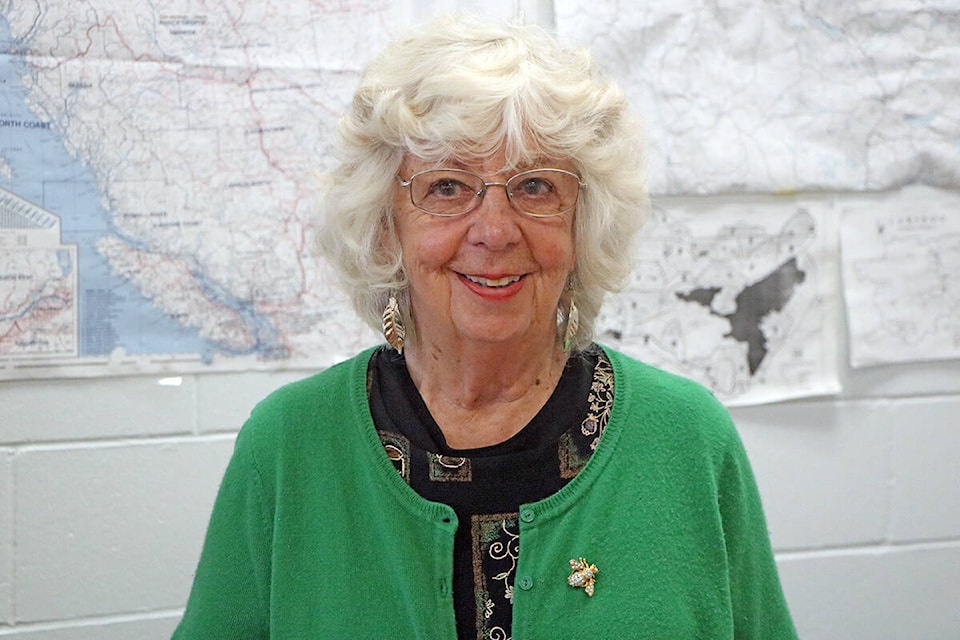In the early days of homesteading it was often difficult to find teachers for schools being built in remote areas.
The teachers were from urban centres and must have felt their new postings were lost in the wilderness. It was not unusual to find that their “room” with a family meant a curtained-off section in an already crowded cabin.
Every school, no matter how few pupils were enrolled, had its own school board. The boards realized that in order to attract teachers it would be necessary to provide suitable accommodations, called teacherages. The size of the teacherages would depend on how large the school was.
Louis Judson described the tiny teacherage at the Bradley Creek School.
“The Blattlers were a family with several school-age children. They moved onto a property across Bradley Creek from the school, around 1931. They built a small log cabin where a teacher could live in privacy. It had a good wood stove and running water close at hand. They built a strong footbridge across the creek.”
After many years, when the school had closed, the teacherage roof collapsed and the cabin is now part of the underbrush.
One September day in 2007 I was at the Forest Grove School to catch a few words of wisdom from children who were beginning a new school year. A distinguished-looking gentleman was talking with the principal. His name was John Calam and he was on a tour of schools where he had taught during his career.
The Forest Grove School had been his first teaching position, in 1951. That year, several teachers were staying in two cabins at the Forest Grove Lodge and one teacher was boarding with a school trustee. Calam and the principal, Dyne Kyall, moved into the new teacherage at the corner of Eagle Creek Road and the road to Canim Lake.
Everything needed to set up housekeeping was provided to them. The two young men divided up the chores. For a week, one would do the cooking and cleaning. The other would keep the wood box full, supply kindling, and tend to the Coleman lanterns.
“Instead of a bathroom, we had an outhouse. We adapted to its winter chills and summer wasp nests,” Calam said. “Our living room was warm and comfortable. With our chores done we had time for professional exchanges. Dyne ran a productive, respectful school, and I valued his opinions. Some evenings we read or played a few tunes, Dyne on his trumpet or banjo, and me on my harmonica or guitar. We were so much part of the community that, sometimes, when it wasn’t quite hunting season there’d be a knock on the door after dark. A hand would thrust a package at you and disappear.”
After a few months, Calam sent me a package of 30 photos that he had taken at the school in 1951, a unique caption for each, and his own life story. He instructed me to “do whatever you want with everything.” I put it all together in a book. It wasn’t until long after the book was printed that I discovered that Calam was well-known in the educational history of B.C. as an author and a professor emeritus with the Faculty of Education at UBC.
The teacherage in Forest Grove still stands as a comfortable home. Sheri-Lyn Wilson has lived there since 2004. She described how that came to be.
“I was living at Canim Lake and working at the Forest Grove Store. I kept looking at this house across the way that was for rent. Finally, I rented it, then leased to own. It became part of an estate sale and I arranged to buy it.”
Wilson loves her perch on the hill where she and her big white cat enjoy the view.
In 2015, Douglas Smith constructed a sign for the teacherage. It was placed on Wilson’s fence by the senior class of the Forest Grove School. The fence has since been removed and the sign has been moved to a spot near the road to the right of the intersection.
newsroom@100milefreepress.net
Like us on Facebook and follow us on Twitter.
